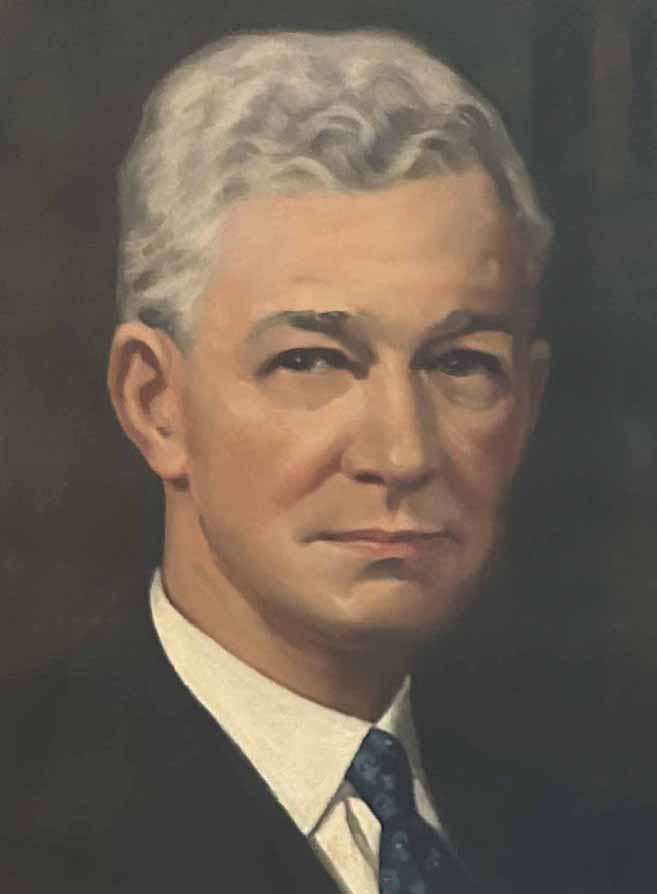By SHERRY DIGMON
News Publisher
The Atmore Area Hall of Fame Committee has made its selection for the 2024 inductees. They are Velma Jackson-Wilkins, Foster Kizer, Lavan Martin, James McNeil, Howard H. Patterson Sr., Dr. Delaine Salter, and Rev. Monroe Tucker.
The committee is changing the induction ceremony this year. Rather than an evening event, it will be held Sunday afternoon, May 19, at 2 p.m., at The Club. Heavy hors d’oeuvres will be served following the ceremony and everyone is invited to stay for a time of fellowship and visit with the inductees and their families.
Tickets for the induction ceremony are $25, and everyone attending (regardless of age) must have a ticket. Tickets are available at the Atmore News Office, 128 S. Main Street – cash or check only, no credit or debit cards. Seating is limited.
Members of the committee are President Billy Conn Madison, Charlotte Boyle,
Sherry Digmon, Larry Forney, Ann Gordon, Anthony Marshall, Dr. Ullysses McBride, Myrna Monroe, and Lori Stinson.
Each week, Atmore News will feature one of the inductees. This week, Howard H. Patterson Sr. is featured.
Howard H. Patterson Sr.

One cannot talk about Atmore’s early history without noting the contributions of Howard H. Patterson Sr.
Patterson was born in Amherst, Nova Scotia, August 26, 1872, son of W.G. Patterson, a Baptist minister. When he was six years old his parents moved to Hartford. Connecticut, where he entered public school. It was six years later that his father entered the ministry. The family moved from Hartford to Windsor, Florida, about eight miles east of Gainesville. In 1889, at the age of seventeen, Patterson returned to Hartford where he took a course in Business College. After completion of his course, he returned to F1orida, where he joined his family. He worked as freight agent on the Seaboard AirLines.
He became acquainted with Miss Harriet Carney, daughter of W.M. Carney, the founder of the sawmill company of Atmore. Soon after his marriage to Miss Carney, his father-in-law proposed that he come to Atmore and join him in the lumber business. The proposition was accepted and from then until 1931, Patterson was associated with the Carney Mill Company.
Patterson was more closely associated with W.M. Carney than any other citizen. Perhaps it was his insight into Carney’s ambition that caused him to continue in the footsteps of his father-in-law.
Perhaps the greatest work Patterson tendered to the town is the development of the agricultural industry of the area. As head of the W.M. Carney Mill Company from 1911 to 1931, he followed the policy of building up agriculture on the land destroyed by lumbering. Realizing that his business was semi-destructive, he felt that it was his duty to stimulate agriculture and other industrial pursuits to sustain the countryside. The fact that Atmore grew and prospered, where many mill villages became deserted, is a monument to his far-sightedness.
In June 1936, Patterson received recognition that few men realize in their lifetime. The citizens of Atmore presented him with a magnificent silver vase as a token of love and appreciation they had for him. Inscribed on the vase were these words: “H.H. Patterson, Most Valuable Citizen 1895-1936.”
Patterson revealed his many splendid virtues in response to the presentation speech: “I know of nothing that gives me greater pleasure or anything that could make me feel more grateful than this expression of kindness and faith from my fellow citizens. If deserved it must be for an accumulation of small deeds for there are too many outstanding achievements by other Atmoreans.”
Patterson’s achievements were exceeded only by those of his father-in-law, W.M. Carney, and he followed the same pattern of generosity. Patterson gave unselfishly of time, labor and money to build up schools, churches and civic organizations. His leadership in the Chamber of Commerce, the Lions Club and other organizations toward the betterment of the town was unexcelled. He was certainly instrumental in the construction of the Baptist and Methodist churches, Escambia County High School, and the City Grammar School. The company of which he was president donated the plots of ground both schools were built on. He was also one of the leaders who secured the Training School in Atmore.
When Patterson became one of Atmore’s older citizens, he lived on Main Street and continued to spend much of his time in civic development.
